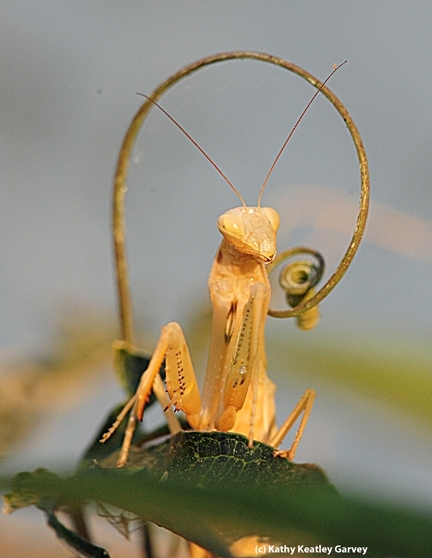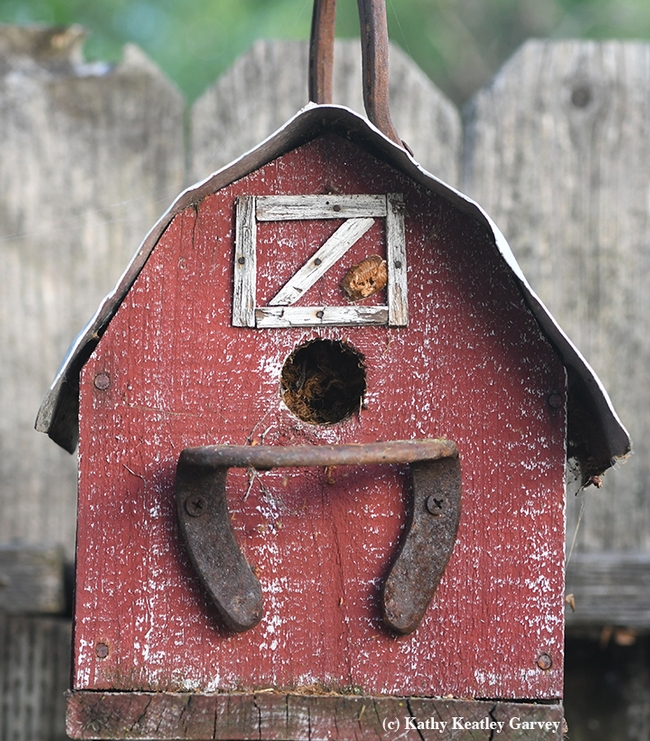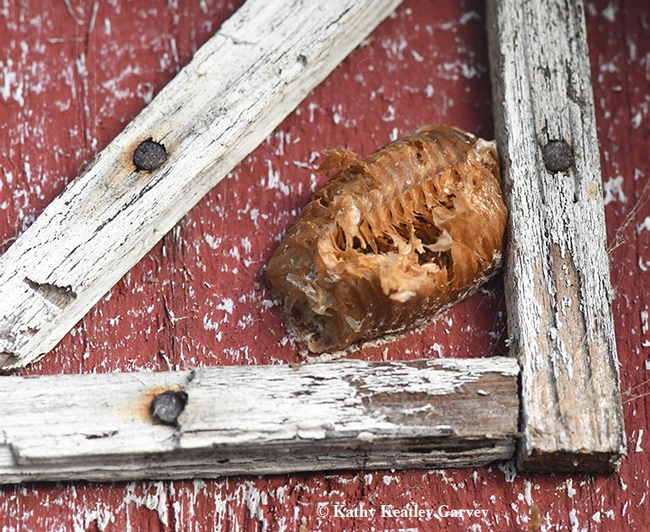
In and around Vacaville, we've seen them on olive trees, honeysuckle vines, passionflower vines, and wooden stakes. On the UC Davis campus, we've seen them on a 10-foot-tall Mexican grass tree (Dasylirion longissimum) in the Storer Garden, UC Davis Arboretum and Public Garden.
Then last week we spotted an ootheca on our decades-old weathered barn birdhouse.
It appears that a predator, probably a bird, ravaged it, though.
But those oothecas are tough.
As Wikpedia tells us: "Oothecae are made up of structural proteins and tanning agents that cause the protein to harden around the eggs, providing protection and stability. The production of ootheca convergently evolved across numerous insect species due to a selection for protection from parasites and other forms of predation, as the complex structure of the shell casing provides an evolutionary reproductive advantage (although the fitness and lifespan also depend on other factors such as the temperature of the incubating ootheca."
"The ootheca protects the eggs from microorganisms, parasitoids, predators, and weather; the ootheca maintains a stable water balance through variation in its surface, as it is porous in dry climates to protect against desiccation, and smooth in wet climates to protect against oversaturation," according to Wikipedia. "Its composition and appearance vary depending on species and environment."
We've always liked old barns. On our family farm, we spent many a glorious moment jumping around in the haymow before, after or during our chores. Fun times! Yes, we heard all the barn-related comments then and now:
- Close the door! Were you born in a barn?
- No use closing the barn door after the horse is gone.
- That guy couldn't hit the broad side of a barn.
Well, that praying mantis that graced us with the ootheca? Odds are that the offspring weren't born in a barn. Neither did they eclose.
Attached Images:

